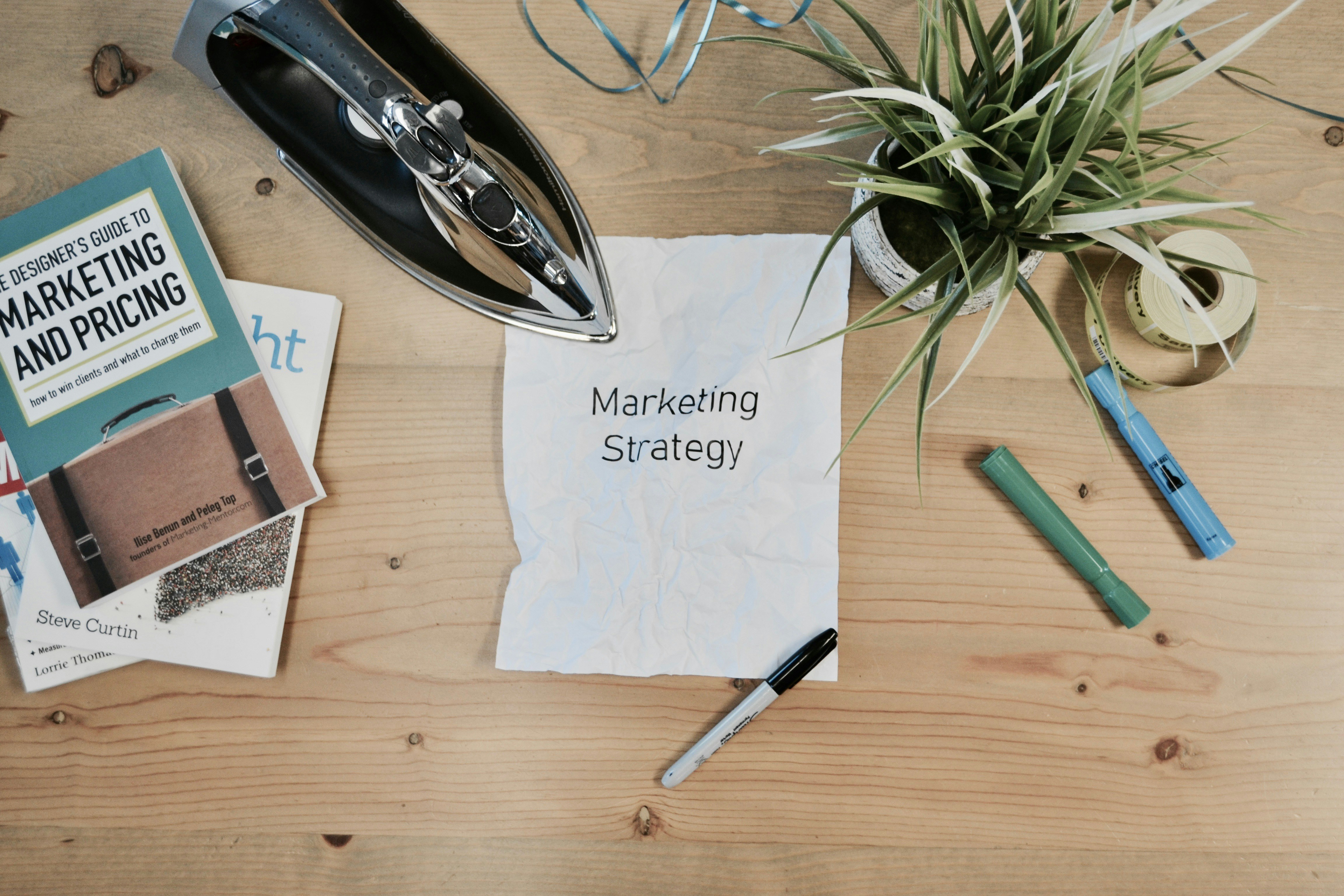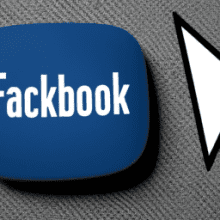How To Use LinkedIn For B2B Marketing?
Have you ever wondered how you can leverage LinkedIn for your B2B marketing efforts? Well, look no further! In this article, we will show you some effective strategies on how to harness the power of LinkedIn to reach your target audience and generate leads for your business. Whether you are a seasoned LinkedIn user or just starting out, these tips and tricks will surely help you maximize your marketing potential on this professional networking platform. So let’s get started and uncover the secrets of successful B2B marketing on LinkedIn!

Building an Effective LinkedIn Profile
Your LinkedIn profile is often the first impression you make on potential employers, clients, or business connections. It is important to create a profile that is professional, engaging, and optimized to showcase your skills and experience. Here are some key steps to building an effective LinkedIn profile.
Choose a Professional Profile Picture
When it comes to selecting a profile picture for LinkedIn, it is best to choose one that portrays you as professional and approachable. Avoid using selfies or casual photos. Instead, opt for a high-quality headshot where you appear confident and friendly. Remember, your profile picture is the first thing people see, so make a positive and memorable impression.
Craft a Compelling Headline
Your headline is a brief description that appears below your name on your LinkedIn profile. It is an opportunity to quickly communicate your professional expertise and catch the attention of those who visit your profile. Use keywords relevant to your industry and highlight your areas of specialization. A compelling headline entices others to click on your profile and learn more about you.
Optimize Your About Section
The About section allows you to give a more detailed overview of your professional background and accomplishments. Use this section to highlight your unique skills, experiences, and achievements that set you apart from others in your field. Be concise, yet informative, and make sure to use keywords related to your industry. This will help search engines and potential connections find your profile more easily.
Highlight Relevant Experience
When adding your work experience to your LinkedIn profile, focus on highlighting the positions that are most relevant to your current goals. Include your job title, company name, and a brief description of your roles and responsibilities. Include any notable accomplishments or projects you have completed, as this will demonstrate your value and expertise to potential employers or clients.
Include Contact Information
Make sure to include up-to-date contact information on your LinkedIn profile. This includes your email address, phone number, and any other professional social media accounts or websites you may have. By providing multiple ways for people to reach out to you, you increase the chances of making valuable connections and being contacted for new opportunities.
Utilize Multimedia Elements
LinkedIn allows you to showcase your work and accomplishments through multimedia elements, such as images, documents, videos, and links. Take advantage of this feature by including relevant examples of your work, such as presentations, reports, or articles you have written. This helps to provide a visual representation of your skills and expertise, making your profile more engaging and informative.
Expanding and Engaging Your Network
One of the primary purposes of LinkedIn is to expand your professional network. By connecting with individuals in your industry or target audience, you open doors to potential business opportunities, partnerships, or collaborations. Here are some strategies to expand and engage your network on LinkedIn.
Identify and Connect with Target Audience
Before you begin connecting with others on LinkedIn, it is important to identify your target audience. Think about who you want to reach and engage with on the platform. This could be potential clients, industry leaders, or potential employers. Use LinkedIn’s search filters to find individuals who match your target criteria, such as location, industry, or job title. Once you have identified your target audience, send them personalized connection requests.
Personalize Connection Requests
When sending connection requests on LinkedIn, it is essential to personalize each message. Avoid using generic or automated messages. Instead, take the time to mention something specific about the person’s profile or work that caught your attention and explain why you would like to connect. Personalized connection requests show that you have taken an interest in the individual and increase the chances of them accepting your request.
Join Relevant LinkedIn Groups
LinkedIn groups are communities where professionals in the same industry or with similar interests gather to share knowledge and insights. Joining relevant LinkedIn groups allows you to connect and engage with like-minded individuals. It provides an opportunity to share your expertise, ask questions, and learn from others in your field. Search for groups that align with your professional goals and actively participate in discussions.
Engage with Content through Comments and Likes
One of the most effective ways to engage with your network on LinkedIn is by commenting and liking posts from your connections. When you come across content that resonates with you or provides valuable insights, leave a thoughtful comment expressing your thoughts or adding to the discussion. This helps to establish yourself as an engaged and knowledgeable professional in your field.
Share Valuable Content
Demonstrate your expertise and provide value to your network by sharing high-quality and relevant content. This could include industry news, informative articles, or original content you have created. Sharing valuable content keeps your network informed and engaged, and positions you as a thought leader in your industry. Be sure to include a brief comment when sharing content to add your perspective or insights.
Participate in LinkedIn Discussions
LinkedIn discussions offer a platform for professionals to engage in meaningful conversations and share their insights. Look for discussions related to your industry or areas of expertise and join in. Share your knowledge, ask thoughtful questions, and provide helpful answers. Engaging in LinkedIn discussions helps to expand your network, build credibility, and establish yourself as an active participant in your field.
Attend LinkedIn Events
LinkedIn offers virtual events that allow professionals to connect, learn, and discover new opportunities. Attend relevant LinkedIn events to expand your network, gain insights from industry leaders, and stay updated on the latest trends in your field. Participate actively in these events by asking questions, sharing your thoughts, and connecting with other attendees. LinkedIn events provide valuable networking opportunities that can lead to new business connections or collaborations.
Leveraging LinkedIn Company Pages
In addition to having a personal LinkedIn profile, it is important for businesses to have a strong presence on the platform. LinkedIn company pages provide a dedicated space for businesses to showcase their brand, products, and services. Here are some strategies for leveraging LinkedIn company pages effectively.
Create an Engaging Company Page
When creating a company page on LinkedIn, focus on creating a visually appealing and engaging page. Use high-quality images that reflect your brand and include relevant and compelling content in the About section. Make sure to include keywords related to your industry to optimize your page for search engine visibility. A well-designed and engaging company page attracts followers and encourages them to explore your offerings.
Optimize Company Description
The company description on your LinkedIn page plays a crucial role in attracting potential followers and clients. Use this section to provide a concise yet comprehensive overview of your company, its mission, and its unique value proposition. Highlight key achievements, awards, or partnerships that establish your credibility and expertise. Optimize your company description by including relevant keywords that potential clients or partners may search for.
Share Company Updates and News
Keep your followers engaged and informed by regularly sharing company updates and news. This could include announcements of new products or services, industry insights, or collaborations. LinkedIn’s company page allows you to post updates in the form of articles, images, or videos. This helps to humanize your brand and gives your audience a behind-the-scenes look at your company.
Feature Products and Services
Take advantage of the “Products and Services” section on your LinkedIn company page to showcase your offerings to potential clients. Use visually appealing images, detailed descriptions, and compelling calls-to-action to attract attention and encourage engagement. This section provides a great opportunity to highlight the unique features and benefits of your products/services and drive leads and conversions.
Utilize LinkedIn Analytics
LinkedIn provides analytics tools that allow you to track the performance of your company page and gain insights into your audience and engagement metrics. Use these analytics to understand which types of content resonate with your audience, identify areas for improvement, and refine your content strategy. Monitor engagement metrics such as views, clicks, and reactions to determine the effectiveness of your posts and make data-driven decisions.
Encourage Employee Advocacy
Encourage your employees to actively engage with your LinkedIn company page and share its content with their networks. Employee advocacy helps to increase the reach and visibility of your company’s message. Provide guidelines and resources for employees to easily share company updates or news on their personal LinkedIn profiles. This not only amplifies your company’s reach but also boosts employee morale and engagement.
Utilizing LinkedIn Showcase Pages
LinkedIn showcase pages are an excellent tool for businesses that have specific offerings or campaigns they want to highlight. Showcase pages function as an extension of your company page, focusing on specific products, services, or initiatives. Here’s how you can effectively utilize LinkedIn showcase pages.
Create Showcase Pages for Specific Offerings
Identify specific offerings or campaigns that you want to highlight and create dedicated showcase pages for each of them. This allows you to provide in-depth information about each offering, target specific audiences, and tailor content accordingly. Showcase pages provide a focused and customized experience for your audience, ensuring that they get relevant information and updates.
Tailor Content for Each Showcase Page
Each showcase page should have content that is tailored to the specific offering or campaign it represents. This includes using visuals, such as images or videos, that showcase the product or service. Craft compelling descriptions that highlight the unique features and benefits. Regularly share updates, news, and relevant content related to the specific offering to engage your followers and keep them informed.
Promote Showcase Pages in Relevant Groups
LinkedIn groups are a valuable resource for finding and engaging with individuals who are interested in specific topics or industries. Identify relevant LinkedIn groups that align with your showcase pages’ offerings and actively participate in discussions. Share valuable content from your showcase pages within these groups to attract relevant followers and drive traffic to your pages.
Track Performance with LinkedIn Analytics
Like your main company page, LinkedIn showcase pages offer analytics that provide insights into the performance and engagement of each page. Utilize LinkedIn analytics to monitor the reach, engagement, and follower growth of your showcase pages. This data helps you understand which offerings resonate with your audience and enables you to adjust your content and strategies accordingly.

Harnessing the Power of LinkedIn Groups
LinkedIn groups offer a powerful platform for professionals to connect, share knowledge, and establish themselves as thought leaders in their industries. Here are some strategies to harness the power of LinkedIn groups effectively.
Find and Join Active Groups in Your Industry
Start by searching for active LinkedIn groups in your specific industry or areas of interest. Look for groups that have a significant number of members and regular engagement. This ensures that your contributions will reach a wider audience and provide opportunities for meaningful discussions and connections. Joining relevant groups allows you to connect with like-minded professionals and stay updated on industry trends.
Engage in Discussions and Share Insights
Actively participating in LinkedIn group discussions is an effective way to establish yourself as a knowledgeable professional and thought leader. Share your insights, experiences, and expertise on relevant topics. Answer questions, provide valuable resources, and offer solutions to common industry challenges. Engaging in discussions helps to build credibility, expand your network, and attract potential clients or employers.
Promote Your Content and Expertise
LinkedIn groups provide a platform to promote your content and expertise to a targeted audience. Share relevant articles, blog posts, or videos that you have created and provide insights or commentary to spark discussions. However, ensure that your content adds value to the group and is not overly self-promotional. By sharing valuable content and expertise, you position yourself as a trusted resource and gain visibility among group members.
Establish Yourself as a Thought Leader
Consistently engaging in LinkedIn group discussions and providing valuable insights helps you establish yourself as a thought leader in your industry. Share original perspectives, offer unique solutions, and demonstrate your expertise. By consistently adding value to discussions, you become someone that others look to for advice or knowledge, expanding your professional network and potential opportunities.
Create and Manage Your Own LinkedIn Group
Taking the initiative to create and manage your own LinkedIn group allows you to establish yourself as a community leader in your industry. This provides a platform for professionals to connect, learn, and engage around specific topics. Choose a niche that aligns with your expertise and create guidelines that encourage meaningful discussions. By managing your own group, you have the opportunity to shape the conversation, gain visibility, and build a valuable network.
Using LinkedIn Ads for B2B Marketing
LinkedIn Ads offers a powerful advertising platform for businesses looking to reach a targeted B2B audience. Here are some key steps to utilizing LinkedIn Ads effectively for B2B marketing.
Define Your Advertising Objectives
Before diving into LinkedIn Ads, clearly define your advertising objectives. Are you looking to generate leads, increase brand awareness, or drive website traffic? Understanding your goals will help you tailor your ad campaigns and measure their effectiveness.
Target Specific Audience Segments
LinkedIn Ads allows you to target your ads based on professional criteria, such as job title, industry, or company size. Define your target audience and utilize the targeting features to ensure your ads reach the right people. This helps to maximize the relevance of your ads and increase the chances of generating quality leads.
Create Compelling Ad Copy
Craft ad copy that is concise, compelling, and speaks directly to your target audience. Highlight the unique value proposition of your product or service and establish a clear call-to-action. Use language that resonates with professionals in your industry and emphasizes the benefits they will receive by engaging with your ad.
Design Engaging Visuals
Incorporate visually appealing and eye-catching visuals in your LinkedIn ads. This could include images, videos, or slideshows that effectively communicate your message. Ensure that your visuals are consistent with your brand identity and align with the overall tone of your ad copy. Engaging visuals capture attention and increase the chances of your ads being noticed and clicked on.
Set Budget and Bidding Strategy
Determine your advertising budget and allocate it across your LinkedIn Ads campaigns. LinkedIn Ads offers multiple bid types, such as cost per click (CPC) or cost per impression (CPM). Consider your advertising objectives and target audience when deciding which bidding strategy to use. Monitor your ad performance and adjust your budget and bidding strategy as needed to optimize results.
Monitor and Optimize Ad Performance
Regularly monitor the performance of your LinkedIn Ads to ensure they are generating the desired results. Use LinkedIn’s analytics tools to track metrics such as clicks, impressions, and conversions. Analyze the data to identify areas of improvement and make necessary adjustments to optimize your ad campaigns. This may include refining your targeting, adjusting your ad copy, or experimenting with different visuals.

Optimizing Content Strategy for LinkedIn
Creating a robust content strategy is essential for successfully engaging your target audience on LinkedIn. Here are some strategies to optimize your content strategy for maximum reach and engagement.
Understand Your Target Audience
To create content that resonates with your audience, it is crucial to understand their needs, interests, and pain points. Conduct market research, analyze industry trends, and listen to your target audience’s feedback. This will help you tailor your content to their specific preferences and provide value that meets their needs.
Create High-Quality and Relevant Content
Your LinkedIn content should be of high quality and directly relevant to your target audience. Provide insights, educational content, or thought leadership pieces that add value to your audience’s professional lives. Use your expertise and experience to create content that educates, inspires, and engages your target audience.
Utilize Different Content Formats
Varying the formats of your content helps to keep your audience engaged. Experiment with different content formats, such as articles, videos, infographics, or podcasts. Different people prefer consuming content in different ways, so offering various formats allows you to appeal to a wider range of preferences and increase the chances of attracting and engaging your audience.
Leverage LinkedIn Publishing Platform
LinkedIn’s publishing platform, known as LinkedIn Pulse, provides a unique opportunity to showcase your expertise and reach a broader audience. Publish original, long-form articles on topics that are relevant to your industry or areas of expertise. Leverage your personal brand and thought leadership to establish yourself as an authority in your field and attract a loyal following.
Optimize Posts for Engagement
Optimize your LinkedIn posts to attract maximum engagement from your audience. Use compelling headlines, concise and informative descriptions, and eye-catching visuals. Encourage your audience to comment, like, and share your posts by posing thought-provoking questions or conducting polls. Engage with your audience by responding to comments and fostering discussions around your content.
Consistently Analyze and Fine-Tune Strategy
Regularly analyze the performance of your LinkedIn content to understand what is resonating with your audience and what could be improved. Utilize LinkedIn analytics to track metrics such as views, engagement, and audience demographics. Based on the data, fine-tune your content strategy by amplifying successful content, experimenting with new ideas, and iterating based on feedback.
Maximizing Engagement through LinkedIn Messaging
LinkedIn messaging provides a valuable channel for connecting and engaging with your professional network. Here are some strategies to maximize engagement through LinkedIn messaging.
Personalize Connection Messages
When sending connection requests on LinkedIn, take the time to personalize each message. Avoid generic messages and instead mention something specific about the recipient’s profile or work that caught your attention. Explain why you would like to connect and how you can potentially provide value. Personalized connection messages stand out and increase the likelihood of your request being accepted.
Initiate Meaningful Conversations
Once your connections have accepted your request, initiate meaningful conversations to establish rapport and build relationships. Ask open-ended questions, actively listen to their responses, and contribute insights or share resources that may be helpful to them. Avoid being overly sales-focused and focus instead on building genuine connections based on shared interests or goals.
Share Relevant Resources
Utilize LinkedIn messaging to share relevant resources or content with your connections. This could include industry reports, articles, or webinars that you think would be valuable to them. Tailor your recommendations based on their interests and needs to demonstrate your thoughtfulness and expertise. This helps to establish yourself as a trusted resource and encourages further engagement.
Utilize LinkedIn Sales Navigator
LinkedIn Sales Navigator is a powerful tool for professionals in sales or business development roles. It provides advanced search and filtering capabilities, allowing you to find and connect with potential leads more efficiently. Leverage LinkedIn Sales Navigator to identify key decision-makers, monitor their activity, and engage with them through personalized messaging.
Nurture Leads through Messaging
LinkedIn messaging is an effective channel for nurturing leads and moving them further along the sales funnel. Once you have established a connection and initiated conversations, continue engaging with leads by providing relevant information or insights. Customize your messaging based on their specific needs and pain points. Be patient, build trust, and gradually guide leads towards the next steps in the buying process.
Measuring and Analyzing LinkedIn Performance
Measuring and analyzing your LinkedIn performance is crucial to understanding the effectiveness of your strategies and making data-driven decisions. Here are some key metrics to track and analyze.
Track and Monitor Profile Performance
Keep track of the performance of your LinkedIn profile to understand how it is being viewed and engaged with by others. Monitor metrics such as profile views, connections, and engagement with your posts. LinkedIn provides insights into how your profile is performing, allowing you to identify areas for improvement and optimize your profile accordingly.
Analyze Reach and Engagement Metrics
LinkedIn provides analytics tools that allow you to track reach and engagement metrics for your posts and content. Monitor metrics such as impressions, clicks, likes, comments, and shares. Identify trends and patterns in your content’s reach and engagement to understand what resonates with your audience. This data helps you optimize your content strategy and create more engaging content.
Assess Lead Generation and Conversion
If you are using LinkedIn for lead generation, it is essential to track and analyze the effectiveness of your efforts. Monitor metrics such as the number of leads generated, conversion rates, and the quality of leads. Analyze which strategies, messaging, or content types are most successful in generating and converting leads. Use this information to refine your lead generation strategies and improve your outcomes.
Utilize LinkedIn Reporting Tools
LinkedIn provides reporting tools that offer comprehensive insights into the performance of your LinkedIn campaigns, including ad performance and audience demographics. Take advantage of these tools to access detailed analytics and track the success of your advertising efforts. Use the data to optimize your campaigns and make informed decisions to drive the best results.
Benchmark and Set Goals
Benchmarking your LinkedIn performance against industry standards or competitors helps to gauge your progress and identify areas for improvement. Set specific goals and key performance indicators (KPIs) based on your objectives and track your progress towards achieving them. Regularly review your performance metrics to evaluate the effectiveness of your strategies and adjust your goals as needed.
Keeping Up with LinkedIn Best Practices
LinkedIn is constantly evolving, with new features, updates, and best practices being introduced regularly. To maintain a successful presence on the platform, it is essential to stay updated with these changes and industry trends. Here are some strategies for keeping up with LinkedIn best practices.
Stay Updated with Platform Changes
LinkedIn regularly introduces new features, updates its algorithms, and changes its policies. Stay informed about these updates by following official LinkedIn blogs, subscribing to industry newsletters, or joining LinkedIn-related communities. Being aware of platform changes helps you adapt your strategies and take advantage of new features that can enhance your LinkedIn presence.
Follow LinkedIn Influencers
LinkedIn influencers are individuals who have established themselves as thought leaders in their respective industries. Follow these influencers to gain insights, stay updated on industry trends, and learn from their expertise. Interact with their content by liking, commenting, and sharing to increase your visibility within their networks and establish connections with other professionals in your industry.
Participate in LinkedIn Training and Webinars
LinkedIn regularly offers training sessions, webinars, and workshops to help professionals optimize their LinkedIn presence and understand best practices. Participate in these training opportunities to expand your knowledge, gain insights from industry experts, and learn about new features or strategies. Utilize these resources to continuously improve your LinkedIn skills and stay ahead of the curve.
Network with Industry Professionals
LinkedIn is a powerful networking platform, and networking is key to staying connected and informed within your industry. Actively participate in LinkedIn groups, engage with industry professionals, and build mutually beneficial relationships. Attend industry events and connect with professionals you meet there. Building a strong network helps you stay updated on industry trends and opens doors to potential opportunities.
Regularly Review and Update Your Strategy
Regularly review and evaluate your LinkedIn strategy to ensure it aligns with your goals and industry best practices. Keep track of your performance metrics and analyze the effectiveness of your efforts. If necessary, update your LinkedIn profile, content strategy, or engagement tactics to better meet your objectives and adapt to changes in the platform or industry.
By following these best practices, you can maximize your presence on LinkedIn, expand your professional network, and leverage the platform for various opportunities in your industry. Continuous learning, strategic networking, and consistent engagement are key to succeeding on LinkedIn.




